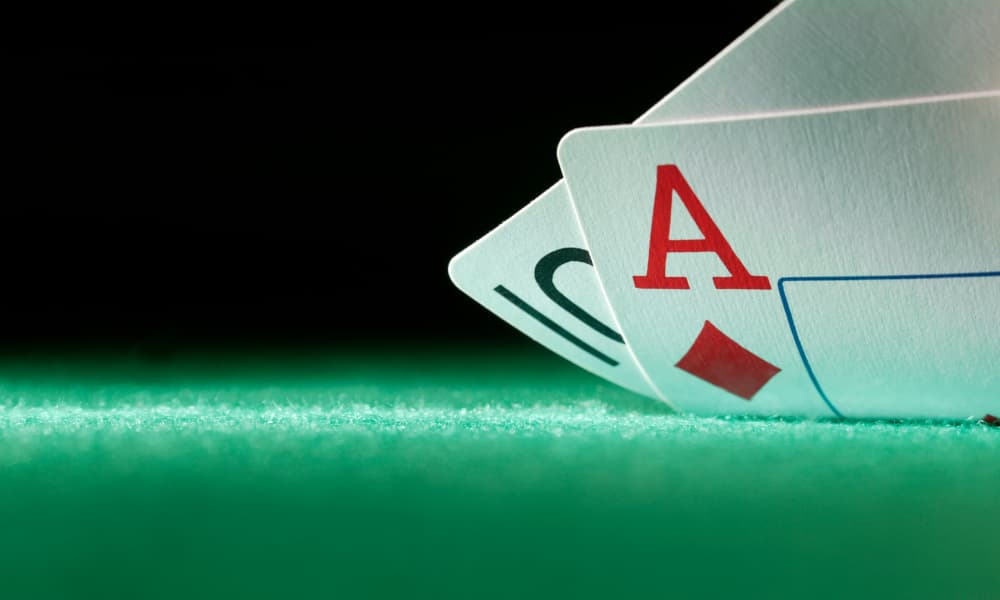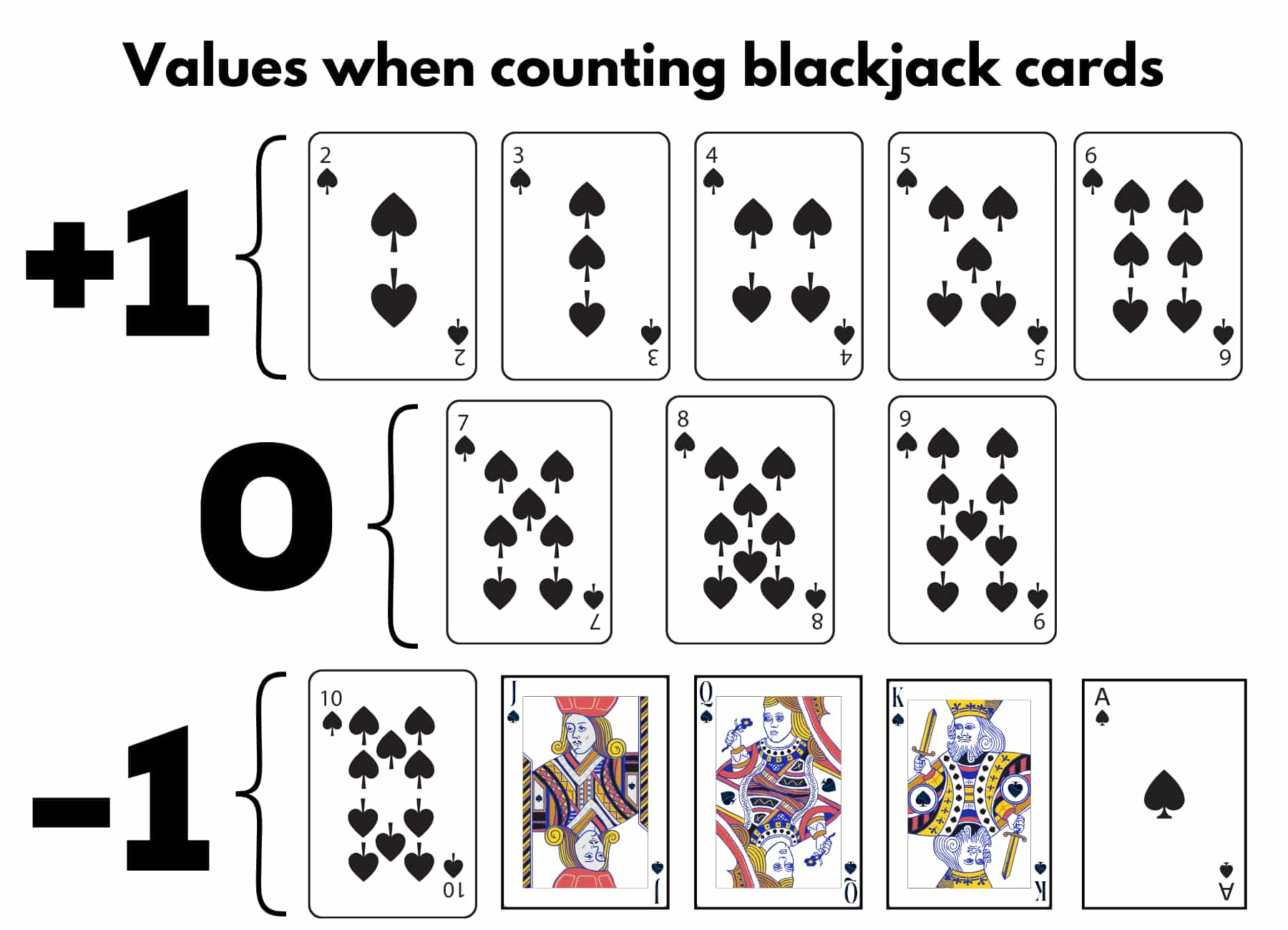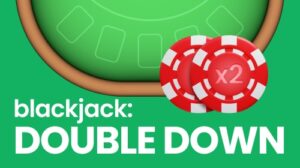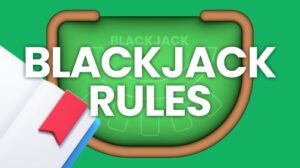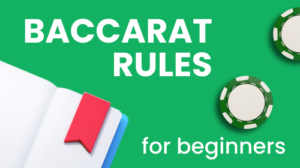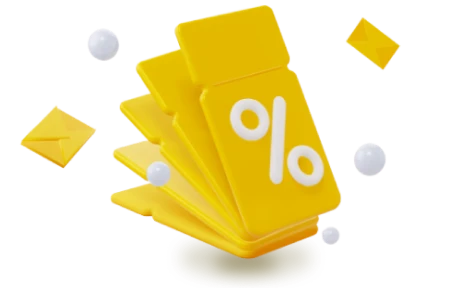Card Counting in Blackjack
Card counting in blackjack is a strategy that helps players understand whether more high-value or low-value cards remain in the deck. When used correctly with basic blackjack strategy, it can give the player a small but real edge over the casino.
This guide will explain how card counting works, the differences between running and true counts, and the most popular counting systems — starting with beginner-friendly methods before moving to advanced techniques. We’ll also look at tips, legal considerations in Canada, and why online counting is more challenging.
What Is Card Counting in Blackjack?
Card counting means tracking the cards that have already been dealt to estimate the composition of the remaining deck. This helps you decide whether to hit, stand, double down, or split with greater accuracy.
When more high-value cards (10s, face cards, and aces) remain, the odds of hitting a blackjack or forcing the dealer to bust are higher. In these situations, players can increase their bets to take advantage of the favourable deck.
Card counting does not guarantee a win in every hand, but over time, it can shift the house edge — sometimes turning a ~0.5% casino advantage into a small player advantage of 1–2% in ideal conditions.
Is Card Counting Legal in Canada?
Card counting is not illegal in Canada. You can use it in both land-based and live online casinos. However, casinos are private businesses and may take steps to make counting harder or ban players they believe are counting.
Common countermeasures include:
- Using multiple decks (usually 4–8)
- Shuffling more often
- Installing continuous shuffling machines
- Limiting or banning suspected counters
Before you try counting in a Canadian casino, check provincial rules and be aware that the casino may still refuse service if they detect counting.
Blackjack Rules in Brief
In blackjack, the goal is to get as close as possible to 21 without going over. Players compete against the dealer, not each other.
- Number cards (2–9) are worth their face value.
- 10, J, Q, and K are worth 10 points each.
- An ace is worth 1 or 11 points, whichever benefits the hand.
How Card Counting Works
Card counting assigns a value to each card — positive, negative, or zero. As cards are dealt, you add or subtract based on their value to maintain a running total.
If many low cards have already been dealt, the remaining deck will have a higher proportion of high cards. This benefits the player and is a signal to increase bets.
Running Count
The running count starts at zero and is adjusted after each card is dealt. A higher running count means more high cards remain.
True Count
In multi-deck games, you must convert the running count into the true count by dividing it by the estimated number of decks remaining. This gives a more accurate measure of advantage.
Example: If the running count is +8 and there are 4 decks left, the true count is +2. A positive true count means the deck is rich in high cards, favouring the player.
Beginner-Friendly Card Counting Systems
If you’re new to counting, start with one of these simpler systems:
| System | Card Values | True Count Needed? | Difficulty |
|---|---|---|---|
| Hi-Lo | 2–6 = +1, 7–9 = 0, 10–A = -1 | Yes | Beginner |
| KO (Knock-Out) | 2–7 = +1, 8–9 = 0, 10–A = -1 | No | Beginner |
The Hi-Lo system is the most popular and balances simplicity with accuracy. The KO system is even easier, as you don’t need to calculate the true count.
Advanced Card Counting Systems
Once you master a basic system, you can try more complex counts that assign varied values to different cards for greater accuracy. These require more mental focus and practice.
- Zen Count – Tracks aces separately and assigns different weights to mid-cards for finer adjustments.
- Uston SS – Starts with a negative count and heavily weights certain cards like fives.
- Omega II – Requires ace side-counting for more precise blackjack prediction.
- Wong Halves – Uses fractional card values (+0.5, +1.5) for maximum precision but is mentally demanding.
Adjusting Bets with the True Count
Best Tips for Blackjack Card Counting
Card counting is an effective strategy in blackjack, but it requires practice and discipline. Here are some expert tips to help you improve your card counting skills and increase your chances of winning.
Learn Basic Strategy
Master the basic strategy before starting with card counting, as it reduces the house edge and improves decision-making.
Choose a Simple System
Start with a simple counting system, like the Hi-Lo, which is easy to learn and apply.
Practice Regularly
Practice at home with a deck of cards or play online for free to make counting automatic and accurate.
Keep Counting Simple
Count cards quickly and accurately, keeping track of each card to maintain the correct running count.
Remember the True Count
Convert the running count to the true count by considering the remaining decks. This makes the results more accurate.
Avoid Multi-Deck Games
Choose games with fewer decks, as they make counting easier.
Manage Your Bankroll
Use bankroll management strategies to manage risks and ensure you don’t risk too much money in the short term.
Final Thoughts
Card counting is a legitimate and legal strategy in Canada, but it takes practice, patience, and the right conditions to be effective. Start simple, practise regularly, and know the casino rules before you begin. Over time, combining card counting with solid blackjack strategy can give you an edge in the game.
